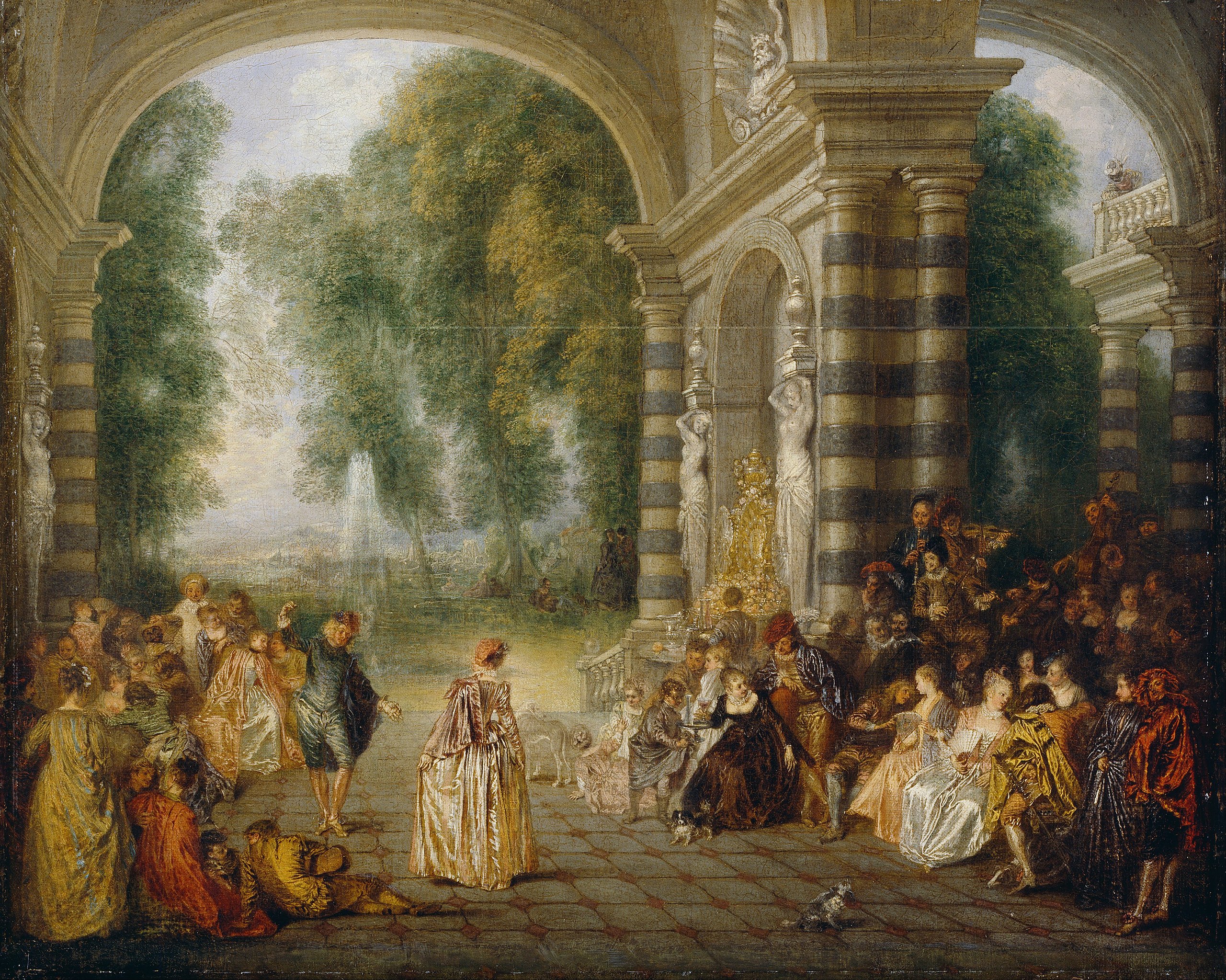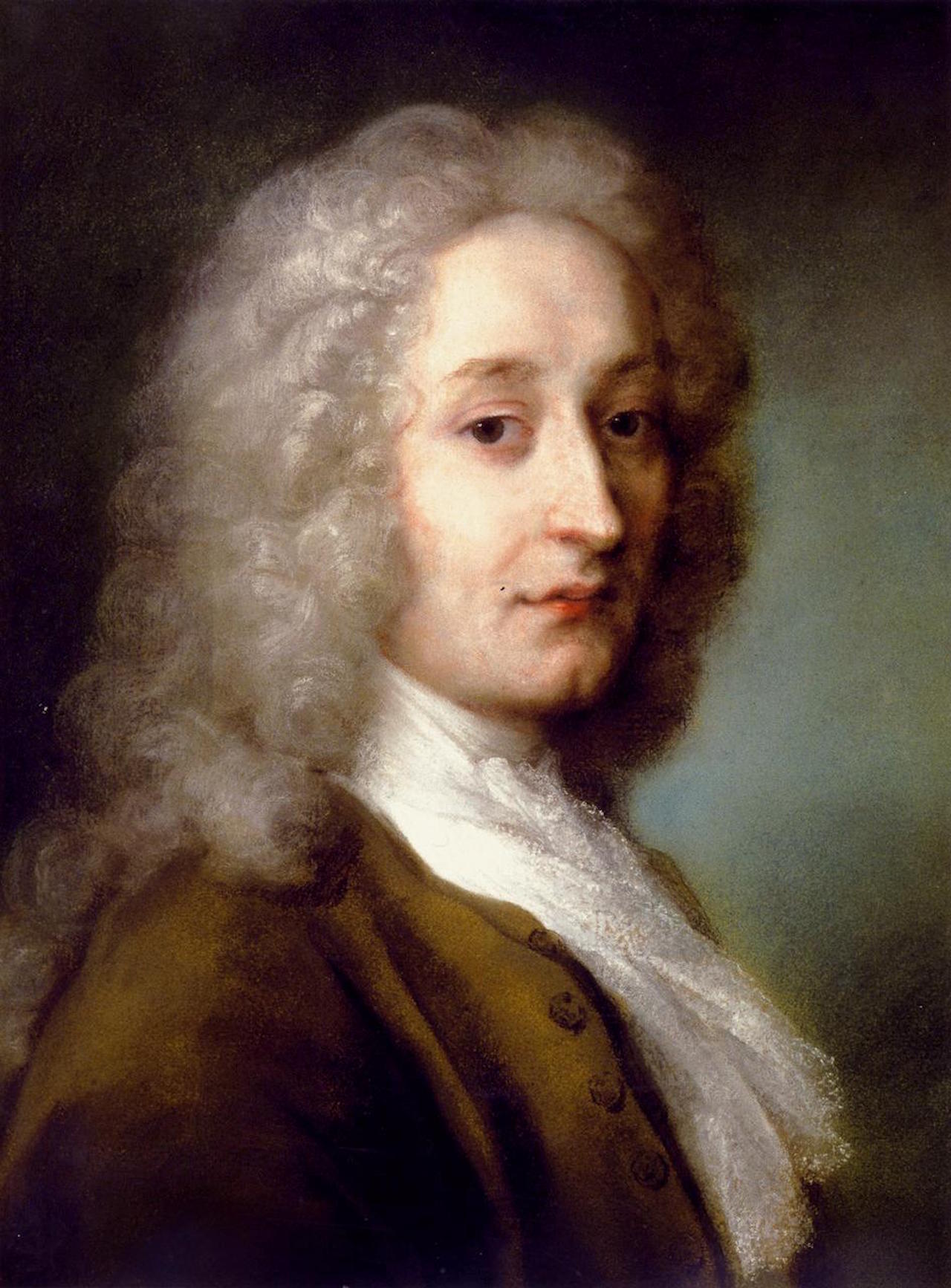Jean-Antoine Watteau was a painter of Flemish origin who became the greatest of Rubens's French followers. He revitalized the waning Baroque style, shifting it to the less severe, more naturalistic, less formally classical Rococo. Watteau is credited with inventing the genre of fêtes galantes, scenes of bucolic and idyllic charm, suffused with a theatrical air. Some of his best known subjects were drawn from the world of Italian comedy and ballet.
What's a bit weird, given the title, is that the painting shows only a little dancing. The male-female couple near the center of the painting are addressing each other across space as couples did during the minuet, the dominant dance of the 18th century. Probably they’re in the minuet’s preparatory gestures. Nobody else is dancing in this painting, but nobody else is claiming such space. Some spatial arrangement suggests that several others are spectators and intend to join the dance in due course. Sure, others are paying no regard to the dance; and look how confined those chatters look spatially by contrast. One step to our right, the musicians are watching that central space with the minuet couple, who look to be the freest and dominant couple in our view.
P.S. Learn more about Jean-Antoine Watteau—the mysterious master of Rococo. To read more stories about some of Watteau's other masterpieces, check the articles below.


 Antoine Watteau
Antoine Watteau